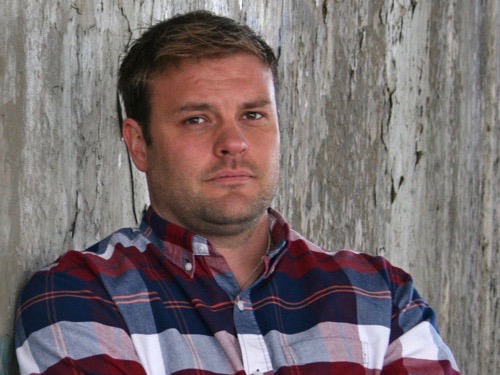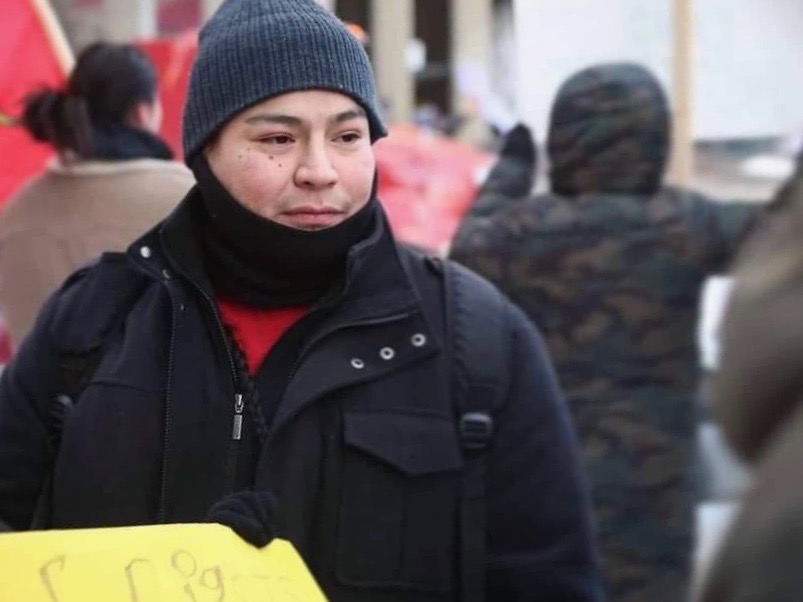Indigenous incarceration rates continue to rise
By Casey Bolton and Spencer Douglas
Ryan Beardy can remember many things about his journey through Canada’s legal system, but what stuck with him most were his fellow inmates.
“I walked in and probably more than 80 per cent of all faces staring through those little windows were brown,” says Beardy, who is Cree/Saulteaux from Manitoba.
Beardy was only 13 years old when he was sent to a correctional centre after joy riding and committing theft under $5,000. He had recently moved from the Lake St. Martin First Nation Reserve to his aunt’s house in Winnipeg’s North End. However, the move was short lived as he entered the Manitoba Youth Centre only a few months later. His run-ins with the law continued for another 20 years.

Ryan Beardy is now a father and studies political science at the University of Winnipeg. [Photo courtesy of Ryan Beardy]
His story is not uncommon. Indigenous offenders are over-represented in Canadian penitentiaries and the numbers continue to grow.
Statistics Canada reported in 2018 that Indigenous people account for roughly five per cent of Canada’s total population, but they comprise 27 per cent of its prison population. This is a dramatic increase from the previous decade.
Among youth and women offenders, the results are even more staggering. The report found that while Indigenous women make up about five per cent of Canada’s population, they account for approximately 38 per cent of women in prison. As a result, Indigenous women are the fastest growing prison population in Canada.
Data from a 2016-2017 Statistics Canada report shows Indigenous youth make up approximately 46 per cent of those obtaining correctional services, while their population hovers at around eight percent.
The over-representation has climbed despite a landmark Supreme Court of Canada decision 20 years ago that instructed judges to find alternatives to incarceration when reasonable. The ruling, known as the Gladue decision, also spawned Gladue reports, which are meant to take into account an offender’s personal history and the effects of colonialism.
“It’s a system that’s based off our colonial erasure of Indigenous people,” says Robert Henry, a Métis from Prince Albert, Sask., and a sociologist at University of Calgary.
Henry specializes in youth gangs and works extensively with Indigenous youth in the Calgary area. He says the over-incarceration of Indigenous Peoples is the result of a systematic bias built into all stages of our criminal justice system.
“In my opinion, what they want to see is a humane or just way of kind of getting rid of or not having to understand these issues,” he says.

Robert Henry specializes in youth gangs in the Calgary area.
[Photo courtesy of Robert Henry]
Kassandra Churcher, the national executive director at the Canadian Association of Elizabeth Fry Societies, agrees.
“From our advocacy work we know that Indigenous women are disproportionately impacted by the classification system that the correctional service uses,” says Churcher, referring to the federal prison system.
The Canadian Association of the Elizabeth Fry Society is a national volunteer based organization that delivers programs and services to at-risk and criminalized women. Volunteers in the programs visit prisons on a monthly basis to monitor conditions and provide human rights based training and advocacy tools to help incarcerated women at the federal level.
“Half of the women we work with at the federal institution are of Indigenous heritage and that’s part of what drives our work to deal with the over-representation and over-arching incarceration issues that are impacting Indigenous girls and women in the country,” says Churcher. “What’s lacking is a national incarceration strategy to start reducing the number of Indigenous woman who are incarcerated.”
Churcher says that the legislation required to make change already exists it’s just “underutilized and underfunded.”
John Borrows, a law professor at the University of Victoria and a Canada Research Chair in Indigenous Law, explains how the system is in need of a dramatic change.
“There is a crisis in our criminal justice system,” he says. “That was 20-some- odd years ago and things have gotten worse since then, I don’t know what label we would apply to it as this point.”
Borrows is an expert in constitutional, Indigenous and environmental law, and is Anishinabe/Ojibway and a member of the Chippewa of the Nawash First Nation in Ontario. He says incarceration is necessary in certain circumstances, but alternatives may be more beneficial.
“We could be investing in restorative elements, retributive elements, educational or preventive actions,” Borrows says.
Henry says that the system is nowhere close to changing. He adds that the change required to end the over-incarceration of Indigenous peoples would result in a loss of jobs for many who work within the system.
“The individuals who are engaged in surveillance and removal of Indigenous Peoples are primarily non-Indigenous,” he says. “The system itself is encouraged to incarcerate or find bodies that are deemed to be deviant or unwanted.”

Beardy is vocal about Indigenous issues in his community.
[Photo courtesy of Ryan Beardy]
Beardy shares the same view. “I see us going down the same direction we’ve been going for the last 20 years because nothing’s been better and nothing will get better unless we look at these underlying issues and address them,” he says.